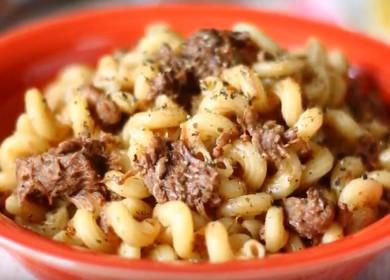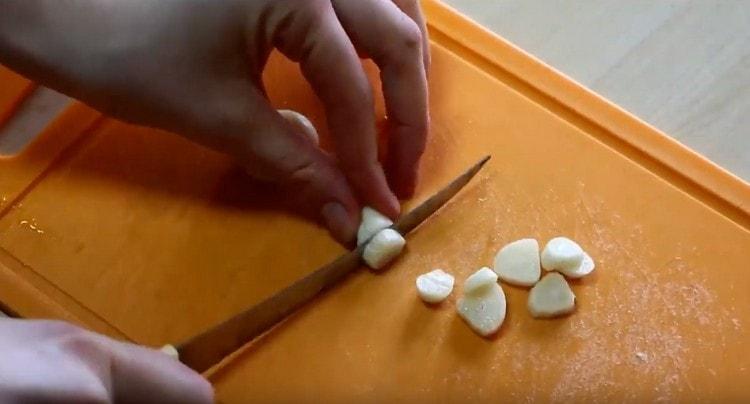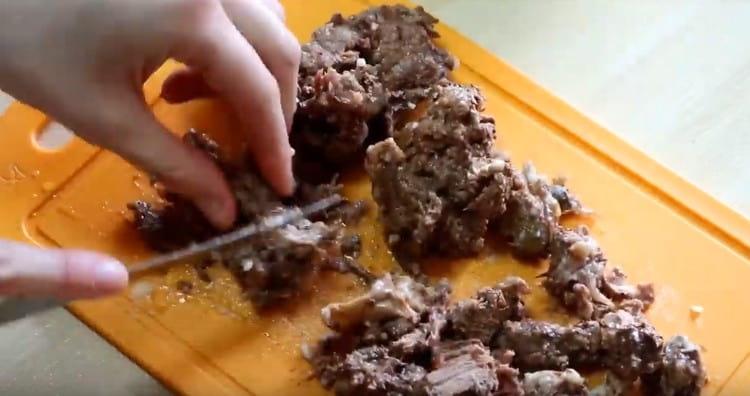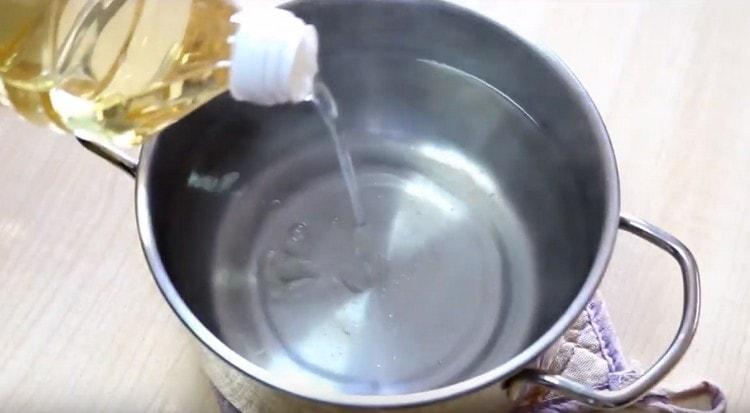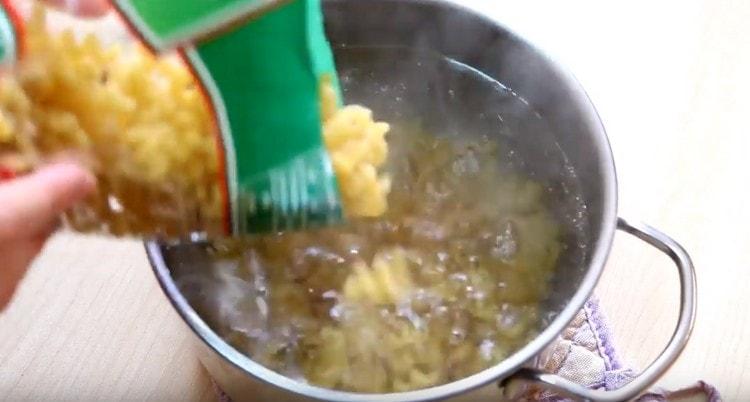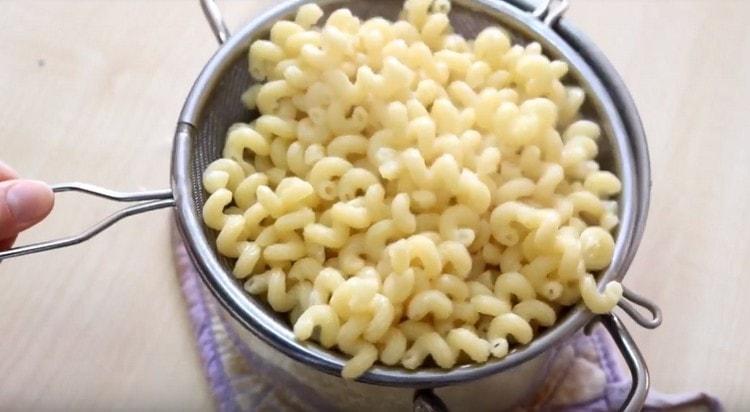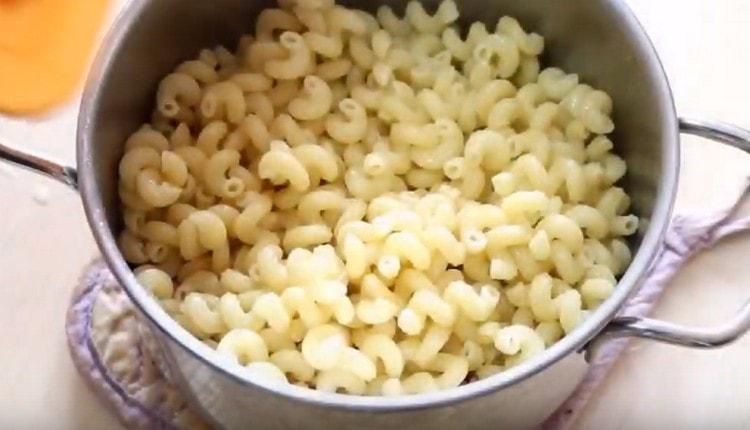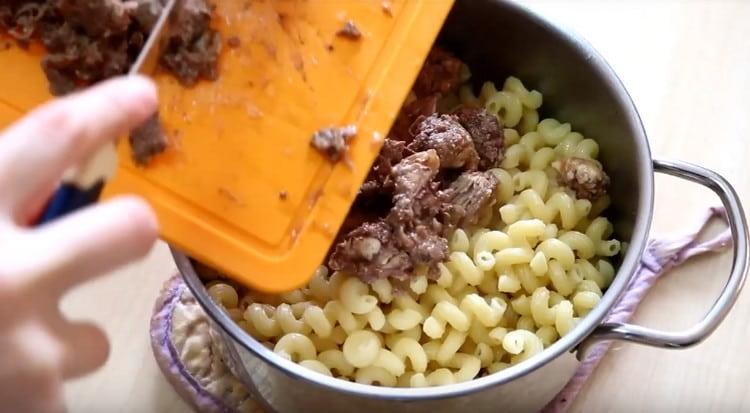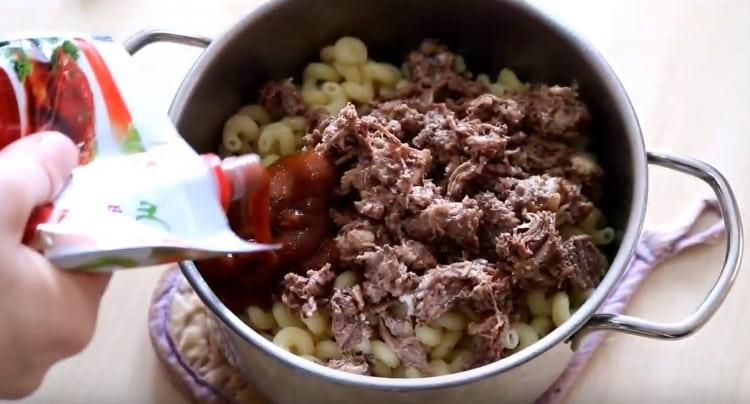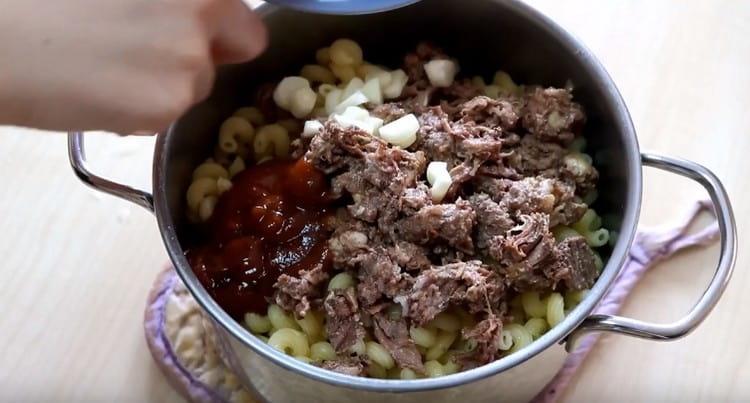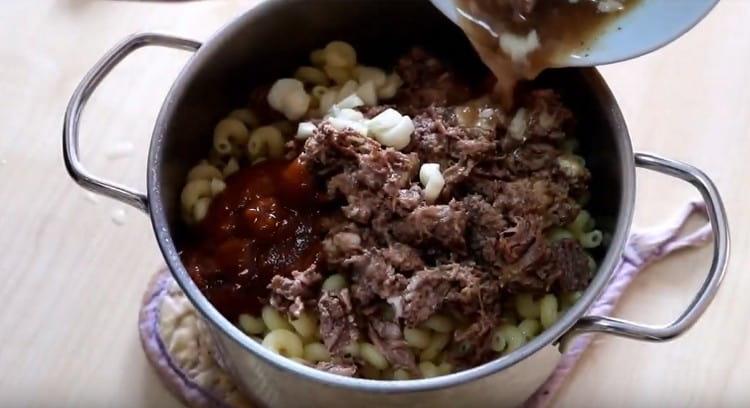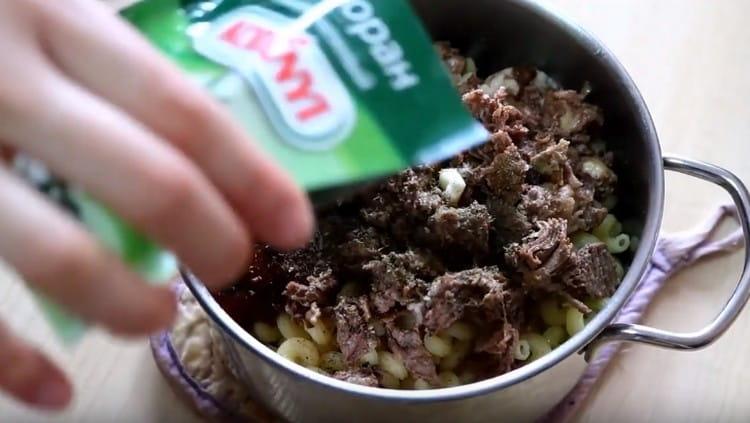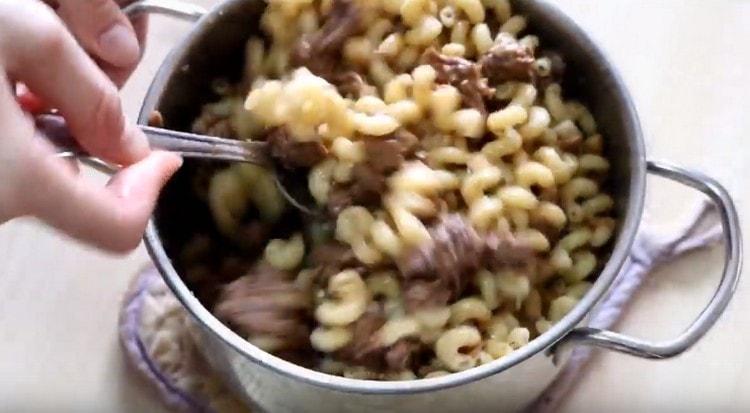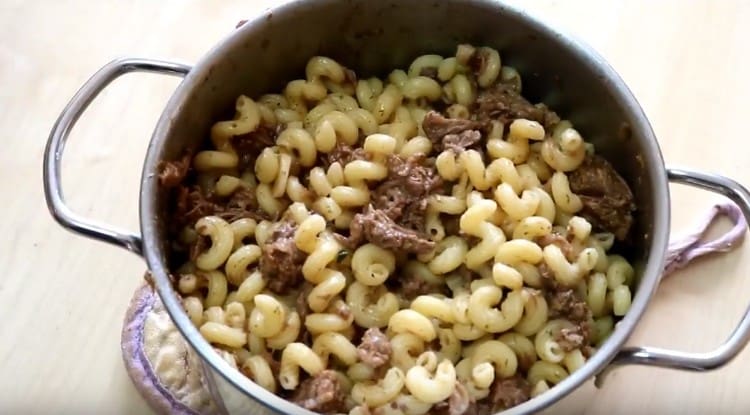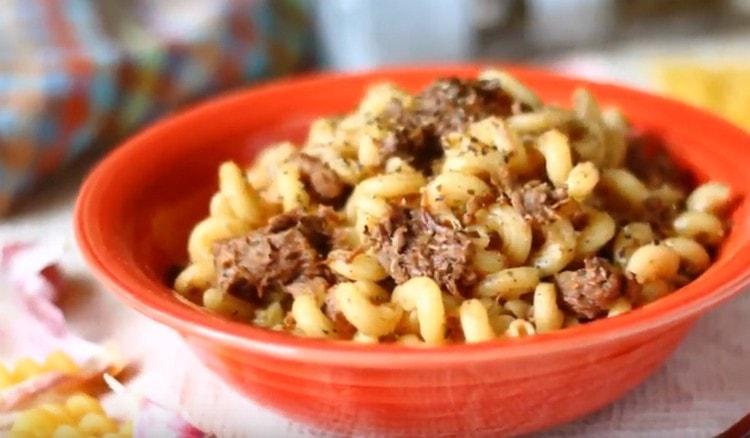Kitchen appliances and utensils: hob, pan, cutting board, knife, colander or strainer, saucer, tablespoon and teaspoon.
Ingredients
| Components | amount |
| Pasta | 250-350 g |
| Beef stew | 1 can = 338 g |
| Vegetable oil | 2 tbsp. l |
| Ketchup | 2-3 tbsp. l |
| Garlic | taste |
| Salt | taste |
| Black pepper | taste |
| Thyme, marjoram, dried dill | taste |
Step cooking
- Using a knife, you need to cut the garlic into thin slices, and then remove on a saucer.

- The stew is laid next to the cutting board. It must be thoroughly crushed to pieces of 2-4 centimeters, and also eliminate the veins, if any.

- When the water in the pan boils, it needs to be salted. Also, a little vegetable oil is poured into the water.

- It is time to add the pasta. The whole pack is poured into the water and cooked to the state of "al dente", as indicated in the instructions on the package.

- When the pasta is ready, they need to be taken out of hot water using a colander or sieve.

- Drain the used water from the pan. Put the pasta from the colander back into the pan.

- Pour the chopped meat into the pasta pan.

- Add ketchup, the amount is determined at your discretion.

- Add chopped garlic.

- If desired, the ingredients can be poured with liquid that remains in the jar from the stew.

- It remains to add herbs: marjoram, thyme and dried dill.

- All ingredients are neatly but thoroughly mixed.

- The pan is placed back on the hob on a small fire. Ingredients should be milled under a lid for 10-15 minutes. In this case, if the liquid from the stew was not added, you must add half a glass of hot water.

- After the period of languishing, it remains to salt and pepper the dish to taste. On this process of cooking pasta with stew comes to an end, bon appetit.

Video recipe
The video from the creator of the recipe in all details and with the comments of the author will show and tell how to cook pasta with stew. It will always help if a step-by-step guide describes a point insufficiently clearly or in detail. In addition, the video can be watched even before the start of independent cooking in order to add up a general idea of the upcoming independent actions. So the task will become much clearer, and the possibility of making a mistake is unlikely.
